
There’s a lot to like about woodblock prints; the centuries-old tradition, the direct nature of the process, the simplicity of the equipment, and the magic of pulling the print from the block. I decided to give it a try a couple years ago, I already had boards and carving tools after all. Still, I’ve only made a few since then, but the upcoming Greenwood Fest inspired me to make this print that is hot off the block.
There are lots of technique and equipment options for making relief prints, and my explorations are very limited. But the basic process is straightforward. Here’s how I went about it.
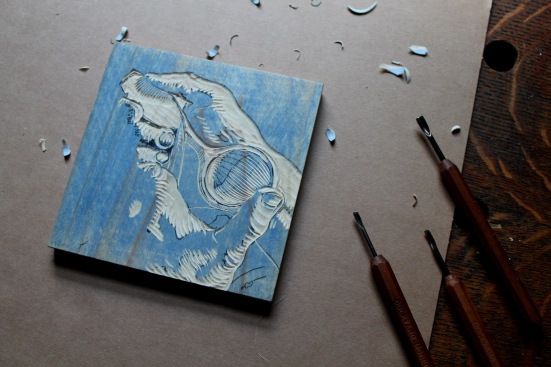
I started by flattening a 5″ x 5″ piece of wood (tulip poplar in this case) with a hand plane, then sanding that surface just with some very fine sandpaper and a block. I painted on a light blue washcoat of artist oils that still allowed the drawing lines to show over it, but also provided some contrast once the cutting begins.
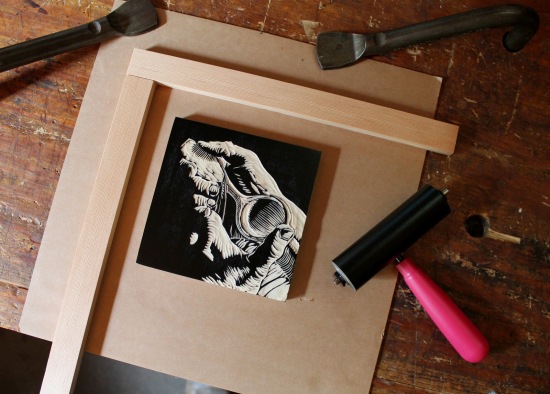
After lots of carving, oil-based printing ink is rolled onto a brayer (rubber roller) then over the block. This applies ink only to the uncarved portions on the surface. With a couple dabs of glue, I’ve attached the block to a piece of cardboard along with two registration sticks.
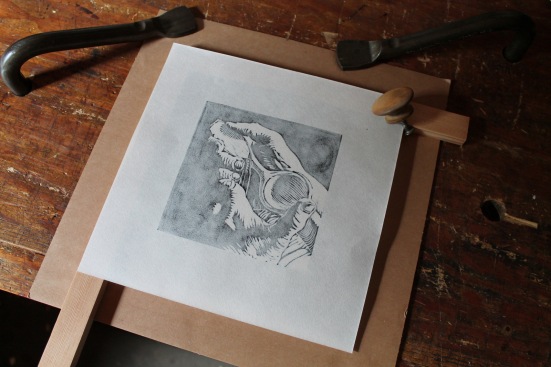
The paper is laid onto the inked block. For this print, I used acid-free unbleached mulberry (kozo) and bamboo fiber paper. The paper is lightly textured and strong, but thin. As I burnish the back side of the paper with my baren, an old wooden knob, the impression is visible through the paper.

Steadily pull the paper from the block, and, if all went well, a finished print is revealed.

The oil-based ink can take a couple days to dry. Due to the hand process there are often very subtle differences between the prints.
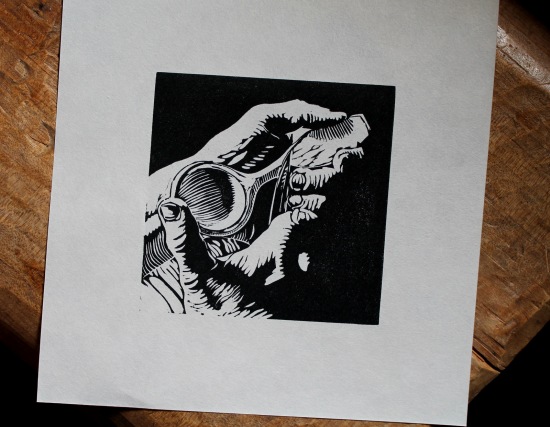
I and the prints are just about ready to head to the Fest.
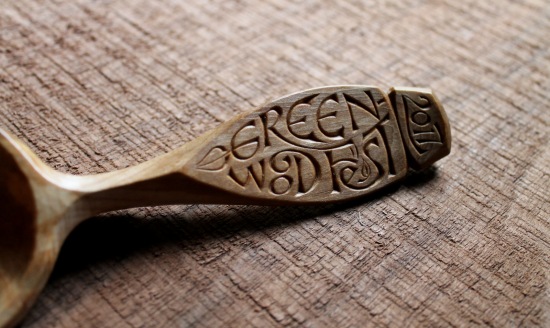

fabulous and the Greenwood Fest spoon is the topper–see you soon–
LikeLike
Dear David,
When you have a chance check out Herbert Ogden Waters 1903-1996 a little known American master wood block printer. Enjoy and thanks!
LikeLike
Thanks, I’ll look forward to that.
LikeLike
Wish I was going!
LikeLike
The prints look great–you’re a natural
LikeLiked by 1 person
Beautiful work!
LikeLiked by 1 person
Any more hidden talents?
Lovely.
LikeLike
Nope. Just lots of hidden faults!
LikeLike
Beautiful work. I’ve almost finished roughing out my second bowl side up bowl. There is so much to learn, and I use your blog, website, and videos to try and keep me in the ball park. Thanks for all the great information you’ve shared. I’ve got a week in June for 2018 blocked out in hopes there will be a 2018 Green wood fest.
LikeLiked by 1 person
Simply beautiful, Dave. Sorry to miss you at GW Fest this year.
LikeLike
Thanks, Peter. Hope to cross paths with you soon.
LikeLike
Nice work David. Good luck at the Fest.
LikeLiked by 1 person
Pretty soon you are going to have to place all of these blogs in a book Dave! You have pretty much touched on all of the topics of greenwood life. Don’t cheap out. Full color hardcover!
LikeLiked by 1 person
Wow David,,, well done ,,, well done,,, I’m so impressed with your work ,,, all of it ,,,
LikeLiked by 1 person
Another string to your bow! The prints look great 🙂
What made you choose tulip poplar? I don’t think we have that in the UK. I am wondering what other woods might be suitable. Perhaps lime (a.k.a. Tilia, Linden, similar to/same as American Basswood*)? I have quite a lot of beech at the moment.
* https://en.wikipedia.org/wiki/Tilia
LikeLike
Thanks. I chose tulip poplar because it is of medium hardness, therefore easy enough to carve but holds up well during printing. More importantly, I had some boards of it around with no plans to use it for anything else! Lime or American Basswood will work for woodblock prints, especially if there isn’t too much fine detail to be carved. A harder wood like beech or cherry will allow for finer lines to be cut, and they both have a tight grain structure. The grain of open-pored woods like oak will show up on the print, an effect that some printers take advantage of sometimes.
LikeLike
Pingback: Bookplates: Ex Libris | David Fisher, Carving Explorations